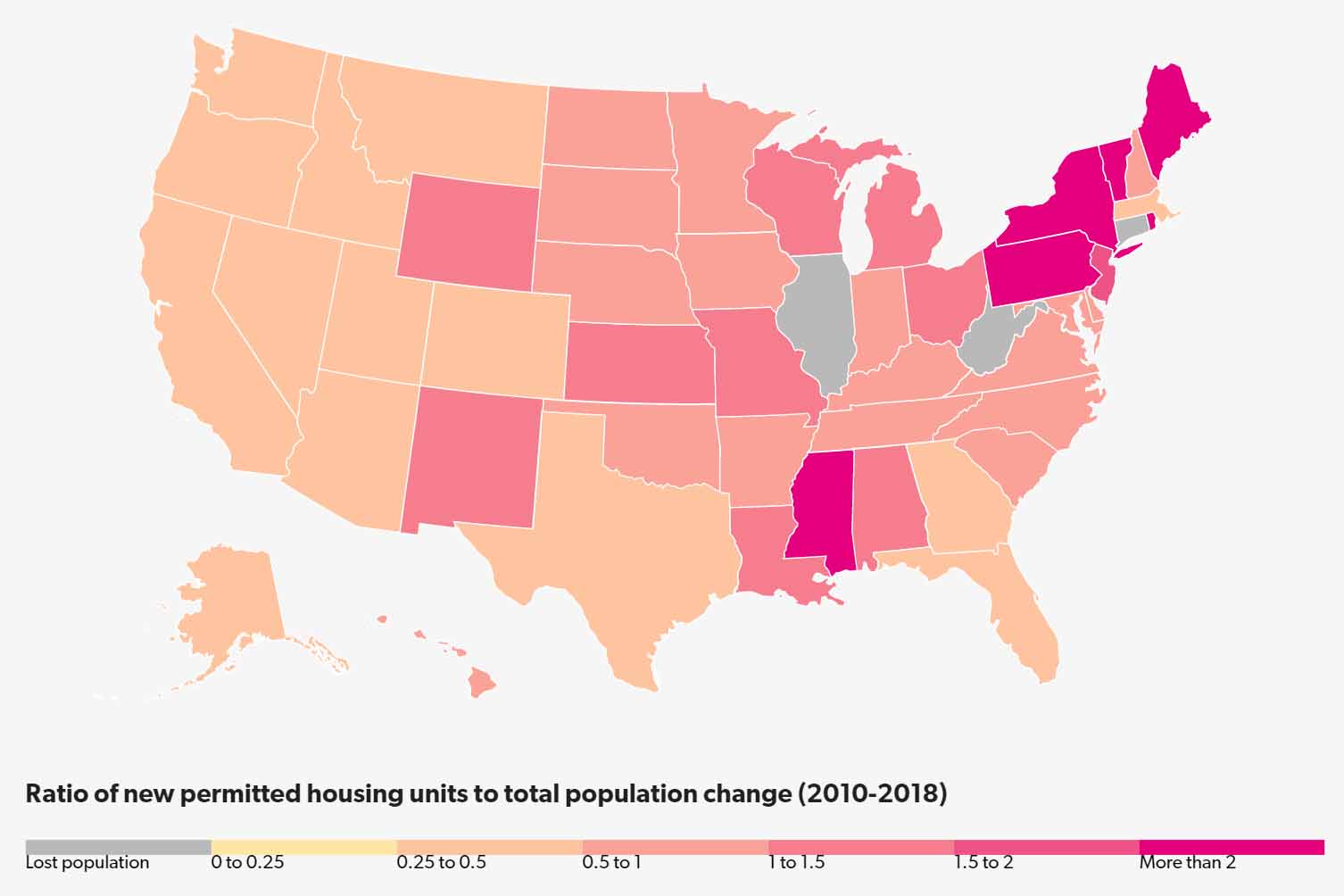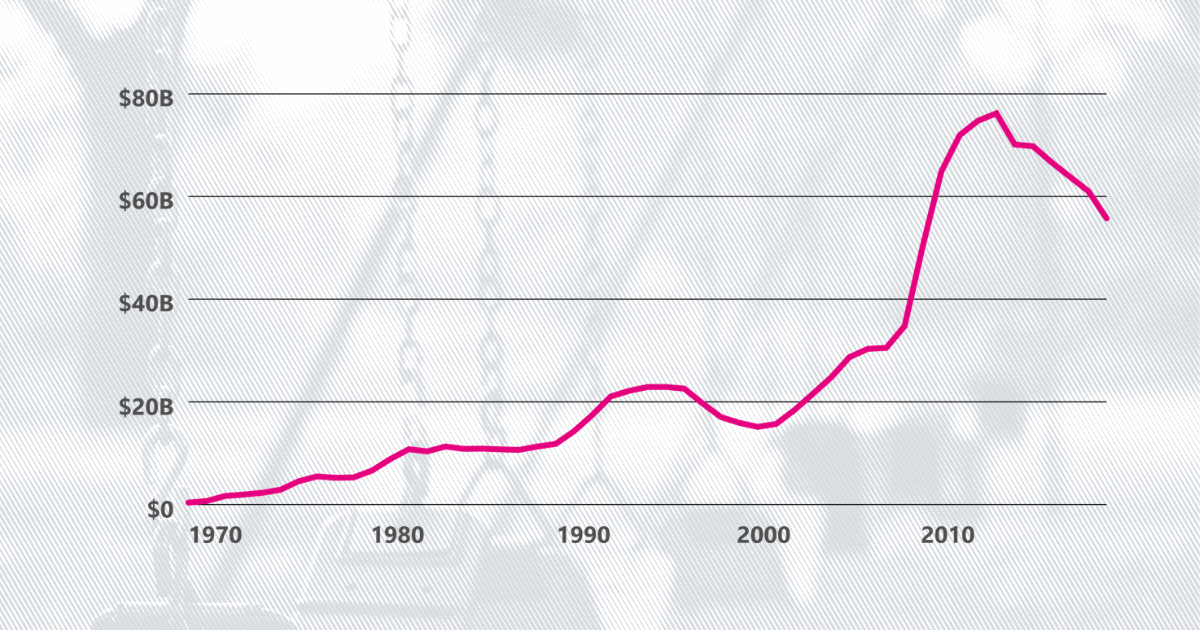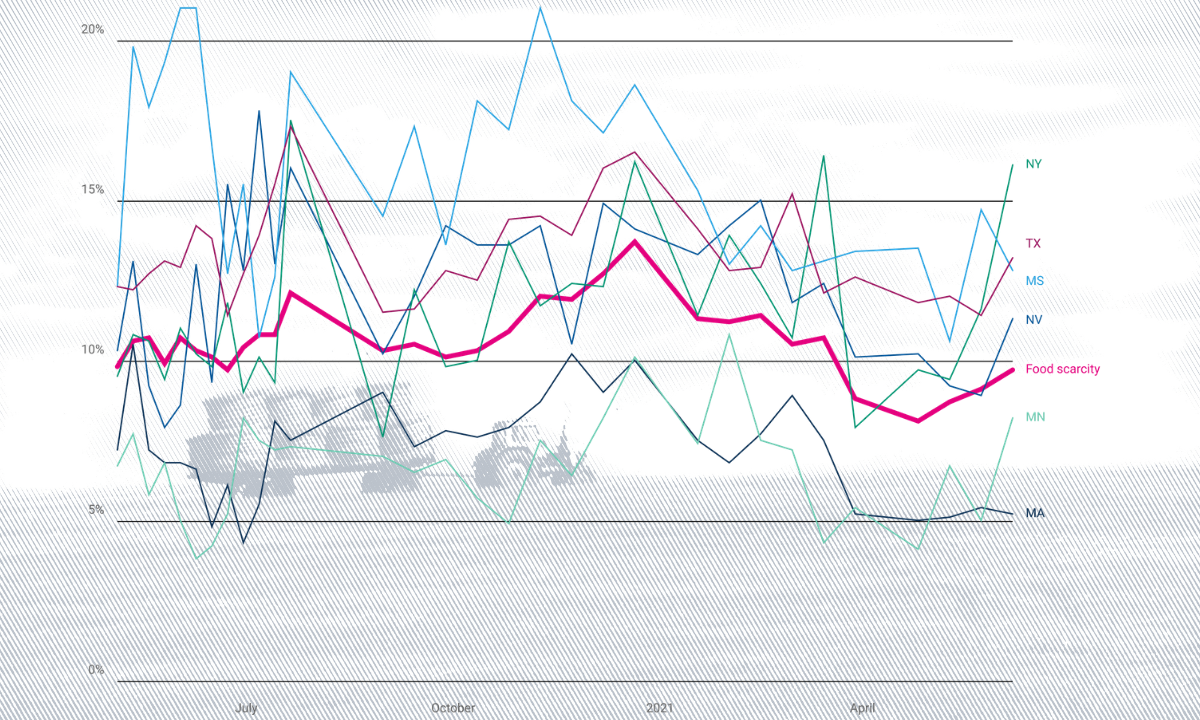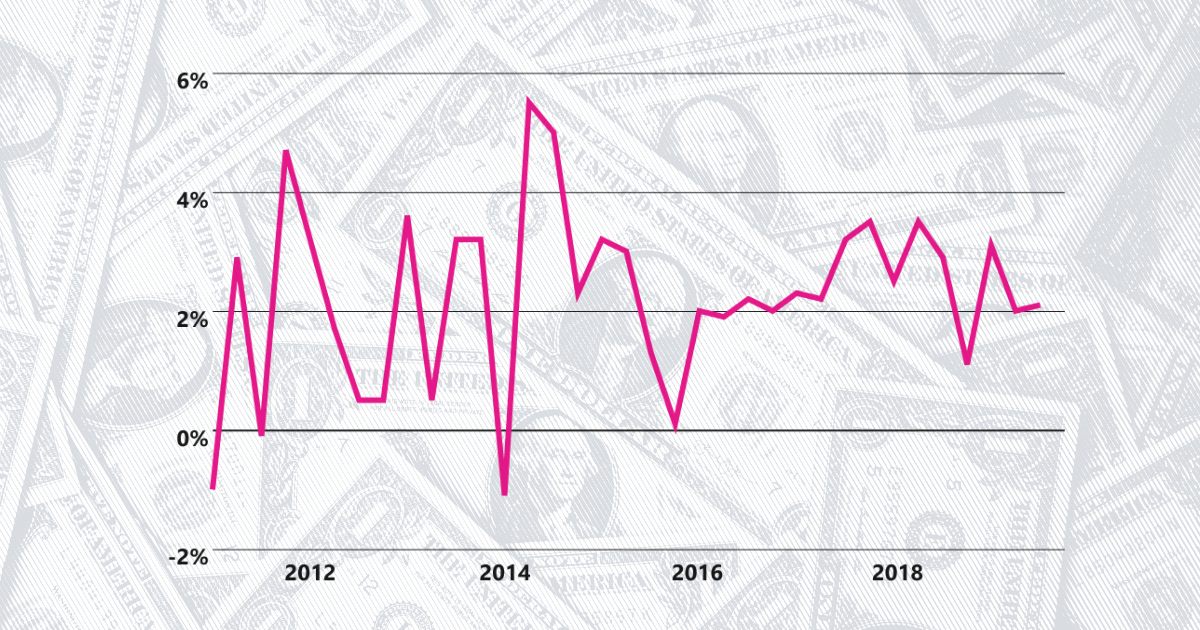Population and society
Ownership, construction and homelessness: How housing has changed across the states since 2010

Poorer households spend a larger portion of their incomes on housing, food, and healthcare. But the challenges of poverty go beyond paying for necessities. People living in poverty are more prone to mental and physical health issues — 19.4% report regular anxiety, and a range of studies indicate an increased risk for chronic disease.
As of January 2023, the federal poverty line is $29,960 for a family of four, or $14,891 for an individual. Households earning at or below these incomes are eligible for certain government programs, including Head Start, the Supplemental Nutrition Assistance Program (SNAP, sometimes referred to as food stamps), and other welfare benefits or temporary assistance.
The poverty rate was 11.5% in 2022 — nearly 38 million people. The share of people in poverty remains below the most recent peak of 15.1%, hit during the Great Recession. When the federal government established its standard poverty thresholds in 1963, the rate was 19.5%.
You are signed up for the facts!
The effects of poverty extend beyond the tangibles — food, shelter, transportation, medicine, and even education. Living in poverty is associated with poorer mental well-being.
People with incomes below the poverty line reported feelings of worry, nervousness, or anxiety at higher rates than average: 19.4% of people living below the poverty line, compared to 12.7% of Americans generally, according to 2022 data from the Centers for Disease Control and Prevention.
Children growing up in poverty are also vulnerable. Kids living in poverty are two to three times more likely to develop mental health conditions than those living in more economically stable households, according to a 2021 Surgeon General report.
The US Department of Health and Human Services has assembled a comprehensive list of research showing that living in poverty increases risks for chronic diseases such as heart disease, hypertension, and stroke. The studies it compiled also show associations between childhood poverty and developmental delays, toxic stress, and nutritional deficits.
The government funds a variety of programs and initiatives aimed at helping people living in poverty improve their overall well-being. These programs address various aspects, including healthcare, nutrition, housing, and education. Here are a few:
Medicaid is a joint federal and state program that provides healthcare coverage to low-income individuals and families. Eligibility criteria vary by state.
Supplemental Nutrition Assistance Program, formerly known as food stamps, gives low-income individuals and families funds) to buy groceries.
Temporary Assistance for Needy Families provides temporary financial support and job training to low-income families with children.
Supplemental Security Income provides cash assistance to low-income individuals who are over 65, blind, or disabled.
Head Start and Early Head Start provide comprehensive early childhood education and parent involvement services to children from low-income families.
Section 8 Housing Choice Voucher Program helps low-income families afford rental housing by subsidizing a portion of their rent.
Low-Income Home Energy Assistance Program helps low-income households with their energy bills, particularly during extreme weather conditions.
Children's Health Insurance Program provides health insurance coverage to children from low-income families.
Free and Reduced-Price School Meals are available to students in public schools through the National School Lunch Program and the School Breakfast Program.
These are just a few examples of the programs aimed at supporting people living in poverty. The eligibility criteria and available services can vary based on need and availability.
Get more data about poverty in America, and get the data directly in your inbox by subscribing to our weekly newsletter.
Population and society
Population and society
Population and society
Population and society
Newsletter
Keep up with the latest data and most popular content.


